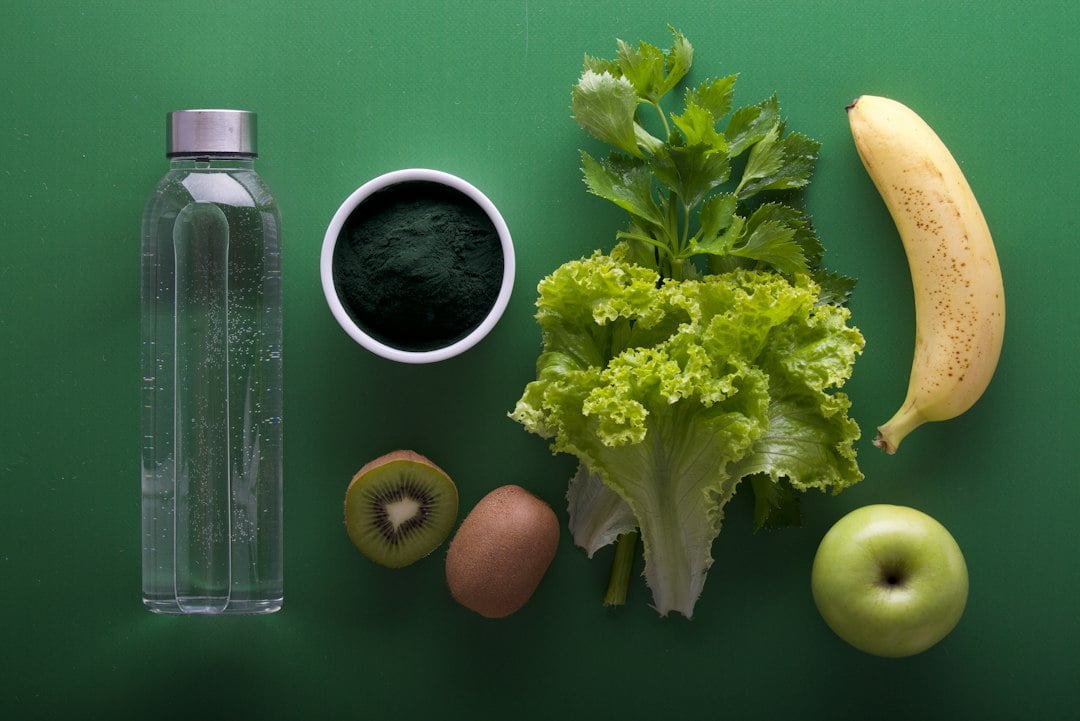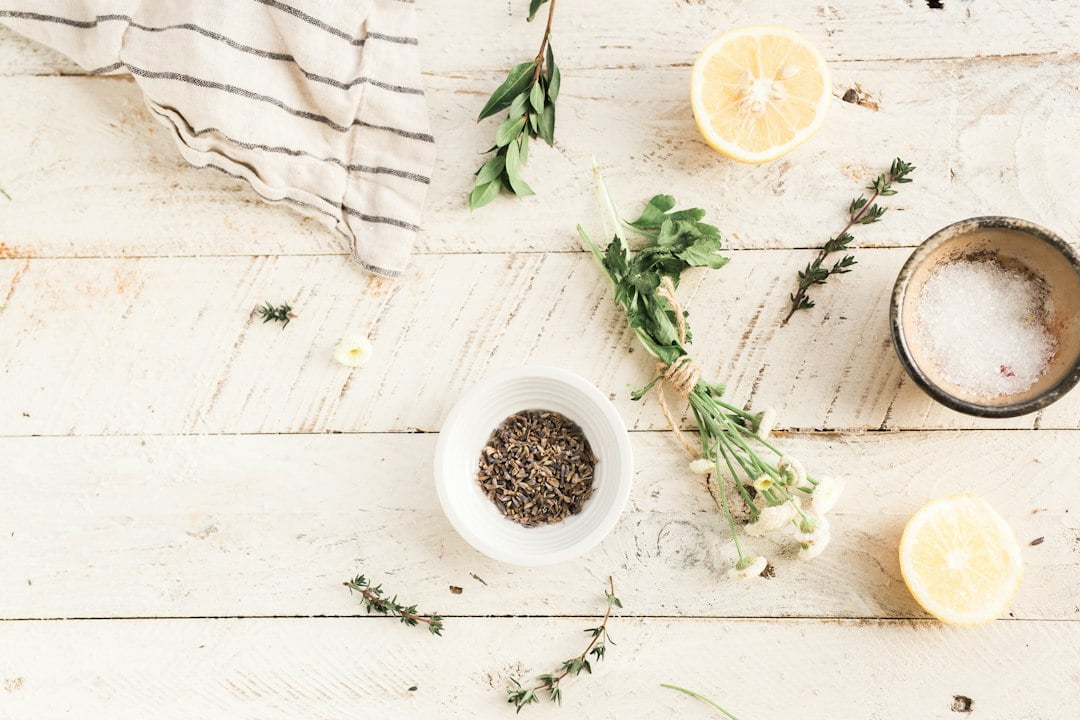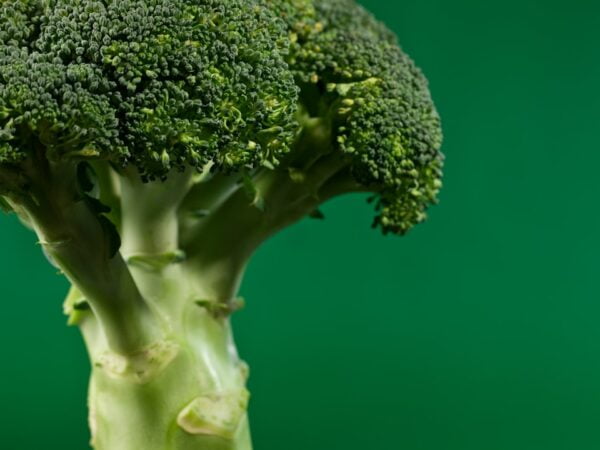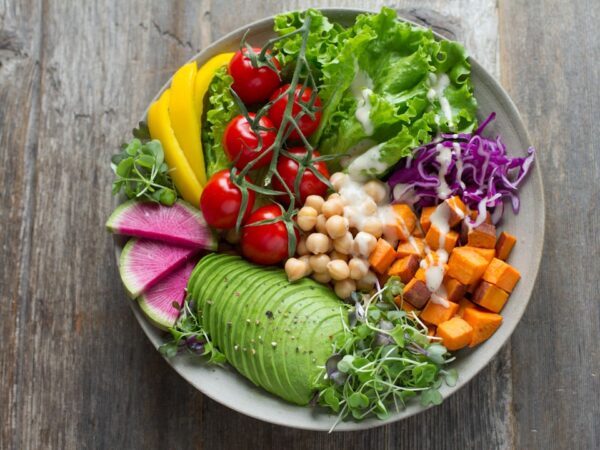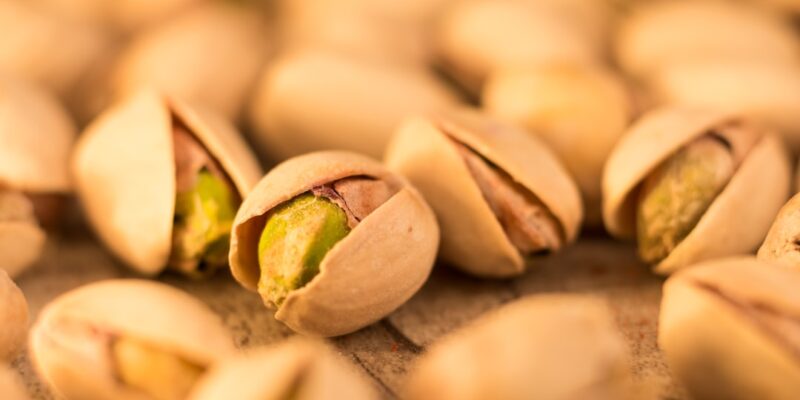
Lower Your Blood Pressure with Delicious and Nutritious DASH Diet: A Guide to Healthy Eating
The DASH (Dietary Approaches to Stop Hypertension) diet is a popular eating plan that has been proven to lower blood pressure and improve overall health. It was developed by the National Heart, Lung, and Blood Institute (NHLBI) as a way to combat hypertension, or high blood pressure, which affects millions of people worldwide. The DASH diet emphasizes consuming fruits, vegetables, whole grains, lean proteins, and low-fat dairy products while limiting sodium, saturated fats, and added sugars.
High blood pressure is a major risk factor for heart disease, stroke, and other serious health conditions. By following the DASH diet, individuals can significantly reduce their blood pressure levels and improve their overall cardiovascular health. In fact, studies have shown that the DASH diet can lower systolic blood pressure (the top number) by an average of 11 points and diastolic blood pressure (the bottom number) by an average of 6 points.
Key Takeaways
- The DASH diet is a dietary approach to lower blood pressure by reducing sodium intake and increasing consumption of fruits, vegetables, whole grains, and lean proteins.
- Following a DASH diet can improve overall health and wellness, including reducing the risk of heart disease, stroke, and certain cancers.
- A DASH diet meal plan should include plenty of fruits and vegetables, whole grains, lean proteins, and low-fat dairy products.
- Incorporating more fruits and vegetables into your diet can provide essential vitamins, minerals, and fiber for optimal health.
- Whole grains are an important component of a healthy diet and choosing options like brown rice, quinoa, and whole wheat bread can provide additional nutrients and fiber.
What is the DASH diet and how does it work to lower blood pressure?
The DASH diet is rich in nutrients that are known to lower blood pressure, such as potassium, calcium, magnesium, and fiber. These nutrients help to relax blood vessels and reduce the volume of fluid in the bloodstream, which in turn lowers blood pressure.
The DASH diet also encourages individuals to limit their intake of sodium, which is a major contributor to high blood pressure. Sodium causes the body to retain water, which increases blood volume and puts added pressure on the walls of the arteries. By reducing sodium intake, individuals can help to lower their blood pressure levels.
The benefits of following a DASH diet for overall health and wellness
While the primary goal of the DASH diet is to lower blood pressure, it offers numerous other health benefits as well. By following this eating plan, individuals can improve their overall health and wellness in several ways.
Firstly, the DASH diet is rich in fruits and vegetables, which are packed with vitamins, minerals, and antioxidants. These nutrients help to boost the immune system, protect against chronic diseases, and promote healthy aging. Fruits and vegetables are also low in calories and high in fiber, making them an excellent choice for weight management.
Secondly, the DASH diet emphasizes whole grains, which are a great source of complex carbohydrates and fiber. Whole grains provide sustained energy and help to regulate blood sugar levels. They also contain important nutrients such as B vitamins, iron, and magnesium.
Thirdly, the DASH diet encourages the consumption of lean proteins such as poultry, fish, beans, and nuts. These protein sources are low in saturated fat and cholesterol, making them heart-healthy choices. Protein is also essential for building and repairing tissues, maintaining muscle mass, and supporting a healthy metabolism.
Understanding the key components of a DASH diet meal plan
| Component | Description |
|---|---|
| Vegetables | Includes leafy greens, carrots, broccoli, tomatoes, and other colorful vegetables |
| Fruits | Includes berries, citrus fruits, apples, and bananas |
| Whole grains | Includes brown rice, quinoa, whole wheat bread, and oatmeal |
| Lean proteins | Includes fish, chicken, turkey, beans, and tofu |
| Nuts and seeds | Includes almonds, walnuts, chia seeds, and flaxseeds |
| Fat-free or low-fat dairy | Includes milk, yogurt, and cheese |
| Healthy fats | Includes olive oil, avocado, and nuts |
| Sodium | Limit to 2,300 milligrams per day |
| Sugar | Limit added sugars to less than 10% of daily calories |
To follow the DASH diet effectively, it is important to understand its key components. The DASH diet recommends specific servings of different food groups based on a person’s daily calorie needs. Here is a breakdown of the key components of a DASH diet meal plan:
1. Fruits: Aim for 4-5 servings per day. One serving can be a medium-sized fruit or ½ cup of chopped fruit.
2. Vegetables: Aim for 4-5 servings per day. One serving can be 1 cup of raw leafy greens or ½ cup of cooked vegetables.
3. Grains: Aim for 6-8 servings per day. One serving can be 1 slice of bread or ½ cup of cooked rice or pasta.
4. Dairy: Aim for 2-3 servings per day. One serving can be 1 cup of milk or yogurt or 1.5 ounces of cheese.
5. Lean proteins: Aim for 6 or fewer servings per day. One serving can be 3 ounces of cooked meat, poultry, or fish or ½ cup of cooked beans.
6. Fats and oils: Aim for 2-3 servings per day. One serving can be 1 teaspoon of vegetable oil or 1 tablespoon of salad dressing.
7. Nuts, seeds, and legumes: Aim for 4-5 servings per week. One serving can be 1/3 cup of nuts or 2 tablespoons of peanut butter.
8. Sweets and added sugars: Limit your intake to 5 servings or fewer per week. One serving can be 1 tablespoon of sugar or jelly or ½ cup of sorbet.
How to incorporate more fruits and vegetables into your diet for optimal health
One of the key components of the DASH diet is consuming a high amount of fruits and vegetables. These foods are packed with essential vitamins, minerals, and antioxidants that promote good health and lower blood pressure.
To incorporate more fruits and vegetables into your diet, start by adding them to your meals and snacks. For breakfast, try adding sliced bananas or berries to your cereal or oatmeal. For lunch, include a side salad or vegetable soup with your meal. For dinner, make sure to have at least two different types of vegetables on your plate.
Another way to increase your fruit and vegetable intake is by making smoothies or juices. Blend together a variety of fruits and vegetables with some water or low-fat yogurt for a refreshing and nutritious drink.
It’s also important to keep a variety of fruits and vegetables on hand so that you always have healthy options available. Stock up on fresh produce during your weekly grocery shopping trip and consider freezing some fruits and vegetables for later use.
The role of whole grains in a healthy diet and how to choose the best options
Whole grains are an important component of the DASH diet as they provide essential nutrients and fiber. They also help to regulate blood sugar levels and promote a feeling of fullness, which can aid in weight management.
When choosing whole grains, it’s important to look for products that are labeled “100% whole grain” or “100% whole wheat.” These products contain all parts of the grain, including the bran, germ, and endosperm, which provide the most nutritional benefits.
Some examples of whole grains include whole wheat bread, brown rice, quinoa, oats, and barley. These grains can be used in a variety of dishes, such as salads, stir-fries, soups, and side dishes.
It’s also important to limit your intake of refined grains, such as white bread, white rice, and pasta made from white flour. These products have been processed and stripped of their bran and germ, which removes many of their nutrients.
The importance of lean protein sources for a balanced diet and healthy blood pressure
Protein is an essential nutrient that plays a crucial role in building and repairing tissues, supporting a healthy metabolism, and maintaining muscle mass. The DASH diet recommends consuming lean protein sources such as poultry, fish, beans, and nuts.
Lean proteins are low in saturated fat and cholesterol, making them heart-healthy choices. They also provide important nutrients such as iron, zinc, and B vitamins.
To incorporate more lean proteins into your diet, try to include them in every meal. For breakfast, consider having a boiled egg or some Greek yogurt with nuts. For lunch and dinner, opt for grilled chicken or fish instead of red meat. If you’re vegetarian or vegan, include plant-based protein sources such as beans, lentils, tofu, tempeh, and quinoa.
It’s also important to prepare proteins in a healthy way. Avoid frying or breading meats, as this can add unnecessary calories and unhealthy fats. Instead, opt for grilling, baking, or steaming your proteins to retain their nutritional value.
Tips for reducing sodium intake and choosing low-sodium options
Sodium is a major contributor to high blood pressure, so it’s important to limit your intake of this mineral. The DASH diet recommends consuming no more than 2,300 milligrams of sodium per day, which is about one teaspoon of salt.
To reduce your sodium intake, start by reading food labels and choosing low-sodium or no-salt-added options. Look for products that have less than 140 milligrams of sodium per serving.
When cooking at home, try to use herbs, spices, and other flavorings instead of salt to enhance the taste of your dishes. Experiment with different seasonings such as garlic, onion powder, lemon juice, vinegar, and fresh herbs.
It’s also important to be mindful of hidden sources of sodium in processed foods. Many canned soups, sauces, condiments, and snacks contain high amounts of sodium. Opt for fresh or homemade versions whenever possible.
Lastly, be cautious when eating out at restaurants as many dishes are loaded with sodium. Ask for sauces and dressings on the side so that you can control how much you consume. You can also request that your meal be prepared without added salt.
Delicious and nutritious DASH diet recipes for every meal of the day
To help you get started on the DASH diet, here are some delicious and nutritious recipes for every meal of the day:
Breakfast: Veggie Omelette
– Whisk together 2 eggs with a splash of milk.
– Heat a non-stick skillet over medium heat and coat with cooking spray.
– Pour the egg mixture into the skillet and cook until set.
– Add your favorite vegetables such as bell peppers, onions, spinach, and tomatoes.
– Fold the omelette in half and cook for another minute.
– Serve with a side of whole wheat toast and fresh fruit.
Lunch: Quinoa Salad
– Cook 1 cup of quinoa according to package instructions and let it cool.
– In a large bowl, combine the cooked quinoa with diced cucumbers, cherry tomatoes, red onions, and fresh herbs such as parsley and mint.
– Drizzle with olive oil and lemon juice, and season with salt and pepper to taste.
– Toss everything together until well combined.
– Serve chilled as a refreshing and nutritious lunch option.
Dinner: Grilled Salmon with Roasted Vegetables
– Preheat your grill to medium-high heat.
– Season a salmon fillet with salt, pepper, and your favorite herbs or spices.
– Place the salmon on the grill and cook for about 4-5 minutes per side, or until it flakes easily with a fork.
– Meanwhile, toss your favorite vegetables such as bell peppers, zucchini, and cherry tomatoes with olive oil, salt, and pepper.
– Spread the vegetables on a baking sheet and roast in the oven at 400°F for about 20 minutes, or until tender.
– Serve the grilled salmon with the roasted vegetables for a healthy and satisfying dinner.
How to make healthy eating a lifestyle change and stick to a DASH diet long-term
Making healthy eating a lifestyle change can be challenging, but it is possible with the right mindset and strategies. Here are some tips to help you stick to a DASH diet long-term:
1. Set realistic goals: Start by setting small, achievable goals that are specific, measurable, attainable, relevant, and time-bound (SMART). For example, aim to eat at least one extra serving of fruits or vegetables each day or reduce your sodium intake by 500 milligrams per week.
2. Plan and prepare your meals: Take the time to plan your meals and snacks for the week ahead. This will help you make healthier choices and avoid impulsive decisions. Prepare your meals in advance and pack them in portion-controlled containers so that you have healthy options readily available.
3. Find healthy alternatives: Instead of focusing on what you can’t eat, focus on finding healthy alternatives to your favorite foods. For example, swap white rice for brown rice, soda for sparkling water, and chips for air-popped popcorn. Experiment with different herbs, spices, and seasonings to add flavor to your dishes without relying on salt.
4. Practice mindful eating: Pay attention to your body’s hunger and fullness cues. Eat slowly and savor each bite, focusing on the taste, texture, and aroma of your food. Avoid distractions such as TV or smartphones while eating, as this can lead to mindless overeating.
5. Stay motivated: Surround yourself with positive influences and find ways to stay motivated on your DASH diet journey. Join a support group or find an accountability partner who shares similar goals. Celebrate your successes along the way, whether it’s reaching a weight loss milestone or consistently sticking to your meal plan.
The role of exercise and stress management in maintaining healthy blood pressure levels
While the DASH diet is an effective way to lower blood pressure, it is important to complement it with regular exercise and stress management techniques. Exercise helps to strengthen the heart and improve circulation, which can lower blood pressure levels.
The American Heart Association recommends at least 150 minutes of moderate-intensity aerobic activity or 75 minutes of vigorous-intensity aerobic activity per week. This can include activities such as brisk walking, jogging, swimming, cycling, or dancing.
In addition to aerobic exercise, it is also important to incorporate strength training exercises into your routine. Strength training helps to build lean muscle mass, which can increase metabolism and improve overall cardiovascular health.
Stress management techniques such as deep breathing, meditation, yoga, and mindfulness can also help to lower blood pressure. Chronic stress can contribute to high blood pressure, so finding healthy ways to manage stress is crucial.
Conclusion and encouragement to try the DASH diet for better health and wellness.
The DASH diet is a proven way to lower blood pressure and improve overall health and wellness. By following this eating plan, individuals can reduce their risk of heart disease, stroke, and other serious health conditions.
The key components of the DASH diet include consuming fruits, vegetables, whole grains, lean proteins, and low-fat dairy products while limiting sodium, saturated fats, and added sugars. By incorporating these foods into your diet and making healthy lifestyle changes, you can achieve better health and maintain healthy blood pressure levels.
Remember that making lasting changes takes time and effort. Start by setting small goals and gradually incorporate healthier habits into your daily routine. With consistency and perseverance, you can successfully adopt the DASH diet as a long-term lifestyle change for better health and wellness.
If you’re looking for more information on healthy eating to lower your blood pressure, you may want to check out this article from Wave Magnets. They provide valuable insights and tips on how to incorporate the DASH diet into your daily routine. With their expertise in nutrition and wellness, Wave Magnets offers practical advice to help you maintain a healthy lifestyle. To learn more, visit their website at https://wavemagnets.com/ or read their article on healthy eating and blood pressure at https://wavemagnets.com/sample-page/.
FAQs
What is the DASH diet?
The DASH diet stands for Dietary Approaches to Stop Hypertension. It is a dietary pattern that emphasizes the consumption of fruits, vegetables, whole grains, lean proteins, and low-fat dairy products while limiting the intake of saturated and trans fats, added sugars, and sodium.
How does the DASH diet help lower blood pressure?
The DASH diet is rich in nutrients that have been shown to lower blood pressure, such as potassium, magnesium, and calcium. It also promotes weight loss, which can further reduce blood pressure.
What foods should I eat on the DASH diet?
The DASH diet emphasizes the consumption of fruits, vegetables, whole grains, lean proteins, and low-fat dairy products. Examples of foods to eat include berries, leafy greens, whole wheat bread, chicken breast, and low-fat yogurt.
What foods should I avoid on the DASH diet?
The DASH diet recommends limiting the intake of saturated and trans fats, added sugars, and sodium. Examples of foods to avoid include fried foods, processed snacks, sugary drinks, and high-sodium foods like canned soups and frozen dinners.
Is the DASH diet suitable for everyone?
The DASH diet is generally considered a healthy dietary pattern that can benefit most people. However, individuals with certain medical conditions or dietary restrictions may need to modify the diet to meet their specific needs.
Can the DASH diet help with weight loss?
Yes, the DASH diet can promote weight loss when combined with regular physical activity. The diet emphasizes the consumption of nutrient-dense foods that are low in calories, which can help individuals achieve a calorie deficit and lose weight.


